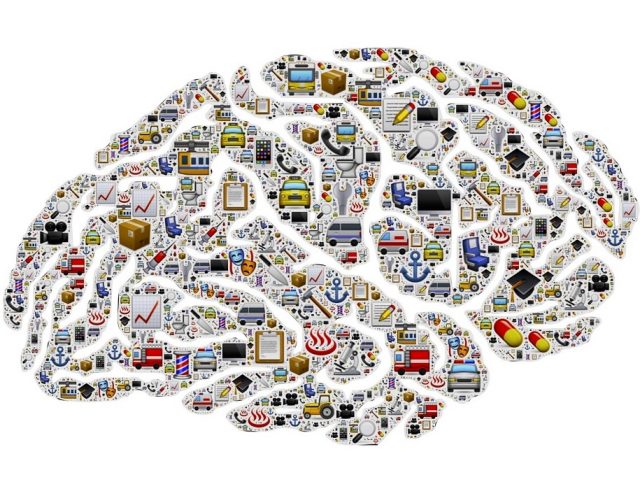It’s cool to understand how the brain works, and the different technologies that measure it. Here are five technologies that measure brain activity.
Did you know that most memories that adults have come from when we were between 15 and 25 years old?
The human brain is a very complex matter, it can store memories, control our thoughts and speech, provide the ability to move limbs and controls the function of our organs.
Keep reading to learn more about five cool technologies used to measure brain activity within humans.
What is Brain Activity?
Brain activity is basically how the brain functions. Everything you do, feel, smell, or see is processed through your brain. For example, if you have an itchy arm, your brain will process signals from your body and this will make you take action and scratch it.
In most recent years, neuroscientists, physicians, and psychologists are making the most of the technology available and beginning to understand more and more about how the human brain works.
Measuring brain activity can be done by neuroimaging, also known as brain scanning. Neuroimaging uses direct or indirect techniques to gain images of the brain structure, function, or pharmacology. There are two main categories of neuroimaging.
Structural Imaging
Structural imaging looks at the structure of the brain and can be used to diagnose diseases in the brain, such as tumors. It can also is also used to diagnose injuries inflicted on the brain.
Functional Imaging
Functional imaging is used to diagnose metabolic diseases and to find lesions in the brain such as Alzheimer’s disease. This type of monitoring brain activity is also used for neurological and cognitive psychology research. Brain activity can light up on a scan, so functional imaging can help to show experts how the brain’s information is processed visually.
5 Ways to Measure Brain Activity
The four main types of brain scans include EEG, PET, MRI, and fMRI. However, with new technologies emerging all the time, there are other ways in which experts can monitor brain activity. For example, they are using magnetoencephalography (MEG) scanners.
Another new technology that scientists are using is fiber photometry. It is currently being used to track changes of calcium in animals. Discover more about fiber photometry, including what is fiber photometry? and how it is used.
- Electroencephalography (EEG)
EEG scans can show brain activity in different psychological states, including drowsiness and alertness. EEG is mainly used to diagnose seizures and other medical conditions that either have too much or too little activity in parts of the brain.
Electrodes are placed on the face and scalp to measure brain activity. Depending on the psychological state of a person, the scan can show differing brain frequencies and EEG signals. Unfortunately, EEG scans aren’t 100% effective because due to the nature of the electric conductivity it can be difficult to work out where the signal in the brain is being emitted.
- Positron Emission Tomography (PET)
PET scans can monitor and measure the levels of sugar glucose in the brain. This can help physicians to see where neural firing is happening. PET scans can be used for diagnosing medical conditions such as Alzheimer’s. However, PET scans are costly to operate and invasive on the patient.
To measure the sugar glucose, PET scans use a tracer substance which is attached to radioactive isotopes and then injected into the blood. Blood that contains the tracer is sent via the brain to deliver oxygen. This shows visible spots that show up on a video image of the brain.
- Magnetic Resonance Imaging (MRI)
MRI and fMRI (functional magnetic resonance imaging) scans are mainly used in relation to psychology. This is because these scans measure neural imaging. MRI scans are non-invasive and pose little health risks. However, the machinery used for the scan means that the patient needs to stay still for a long period of time in a cramped and noisy space.
MRI scans work by using magnetic fields to align atomic nuclei in a patient’s body tissue. It does this by spinning around, then the machine disturbs the axis of rotation of the nuclei. This allows physicians and psychologists to examine the radio frequency signals and observe an image of the brain structure.
- Functional Magnetic Resonance Imaging (fMRI)
fMRI scans use a series of MRIs to measure the structure and the functional activity of the brain. Physicians and psychologists use a computer adaption of different images to study what happens inside patient’s heads when they dream and what happens neurologically when a patient tells a lie.
fMRI scans are used to measure changing signals in the brain. Patients are set tasks to perform mental activities and the fMRI looks into a certain area of the brain to see how the blood flows through it. Then the fMRI takes pictures less than a second apart to see how the brain activity changes during the task. This helps experts learn more about how our brains work and which areas of the brain work together during different activities.
- Magnetoencephalography (MEG)
MEG scans are similar to EEG scans, only a MEG scan can show the magnetic fields that are generated by neural activity. Current MEG scanners need to be kept cold and the sensors need liquid helium, so they are very big and are expensive. However, new research is being conducted in a way to make MEG scanners more efficient and effective.
During a MEG scan, the patient needs to lay flat and remain still. After the scan, physicians can get a detailed picture of the time a signal is sent. This allows experts to understand which parts of the brain are active at the exact time. MEG scans are particularly useful for detecting the area where seizures happen in the brain.
Understand How Brain Activity Works
Understanding brain activity plays a big part in how we can treat different medical conditions. As you can see there are already various ways in which experts can monitor and measure activity in the brain. However, as technologies advance, it seems that there’ll be newer and more up-to-date ways in which experts can understand how the brain works.
If you enjoyed learning more about how to measure brain activity, then make sure you check out some of our other articles about psychology, life, and love.

A professional writer with over a decade of incessant writing skills. Her topics of interest and expertise range from health, nutrition and psychology.




